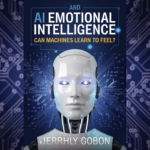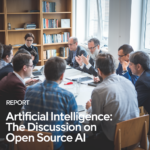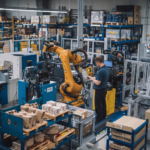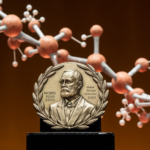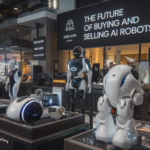Ray KurzweilŌĆÖs Bold Predictions in his new Book “The Singularity Is Nearer”
Ray Kurzweil, a top AI researcher at Google, has just released his new book, “The Singularity Is Nearer: When We Merge with AI.” This book updates his famous 2005 work, “The┬ĀSingularity Is Near,” and makes even bolder predictions about our future with technology. Kurzweil believes we’re quickly approaching a point where artificial intelligence (AI) will be smarter than humans. He calls this moment the “technological singularity.” According to him, this could happen sooner than we think because of rapid advancements in AI, nanotechnology, and biotechnology.
Key Predictions:┬ĀKurzweil makes the following predictions:
- Human-Level AI by 2029: Kurzweil predicts that by 2029, AI will achieve human-level intelligence and pass the Turing test. This test measures a machine’s ability to exhibit intelligent behavior that is indistinguishable from that of a human. Achieving this milestone would mark a significant leap forward, demonstrating that machines can think and reason on par with humans.
- Merging with AI in the 2030s: In the 2030s, Kurzweil foresees humans beginning to merge with AI through brain-computer interfaces and nanotechnology. This means we could potentially enhance our brainsŌĆÖ capabilities by connecting them to computers, allowing us to access vast amounts of information and processing power instantly. Such integration could revolutionize the way we think, learn, and interact with the world.
- The Singularity by 2045: By 2045, Kurzweil believes we will reach the Singularity. At this point, machine intelligence will be billions of times more powerful than all human intelligence combined. This could lead to unprecedented growth and transformation in every aspect of life, from healthcare and education to the economy and beyond.
Exciting Possibilities:
KurzweilŌĆÖs vision of the future is revolutionary:
- Nanobots: These tiny robots could rebuild the world atom by atom, creating new materials and repairing damage at a microscopic level. Imagine a world where buildings, infrastructure, and even our bodies can be repaired and improved with precision.
- Radical Life Extension: Kurzweil suggests that advances in biotechnology could extend human life far beyond the current limits, potentially allowing people to live for hundreds of years. This could be achieved through medical technologies that repair and rejuvenate our bodies at the cellular level.
- Brain-Cloud Interface: By connecting our brains to the cloud, we could enhance our intelligence and access information instantly, making us smarter and more capable. This could transform education, work, and daily life by giving us access to knowledge and cognitive abilities far beyond our natural capacities.
- Technological Innovations: Kurzweil believes that exponential technologies are driving innovation in all industries, improving human well-being by reducing poverty and violence, and advancing renewable energy and 3D printing. These advancements could lead to a more prosperous and sustainable world.
Potential Risks:
However, Kurzweil doesnŌĆÖt shy away from the potential dangers. He addresses:
- Biotechnology and Nanotechnology Risks: These powerful technologies could be misused, leading to unforeseen consequences. The ability to manipulate matter at the atomic level could pose significant ethical and safety challenges.
- AI and Employment: The rise of AI could disrupt job markets, requiring smart government policies to manage the transition. Automation could lead to widespread job displacement, necessitating new approaches to employment and economic security.
- Autonomous Vehicles: The safety of self-driving cars is a significant concern. As these technologies become more prevalent, ensuring their reliability and safety will be critical.
- After Life” Technology: Kurzweil explores the possibility of virtually reviving deceased individuals using their data and DNA, which raises ethical and philosophical questions. This concept, known as “digital immortality,” could fundamentally change our understanding of life and death.
Clear and Engaging Writing:
KurzweilŌĆÖs writing is clear and engaging, making complex technical concepts easy to understand. His deep understanding of computing and its history is evident throughout the book. However, his sweeping statements can sometimes oversimplify issues and venture into speculative territory. It definitely was a page-turner and I could not put it down.
Optimism and Criticism:
While KurzweilŌĆÖs optimism is inspiring, some of his ideas seem almost too fantastical. For example, he envisions a future where 3D printers produce enough food and housing for everyone, AI pioneers breakthrough medical treatments and nanorobots in our bodies fight cancer. Critics argue that he sometimes glosses over the potential downsides and social complexities of these technologies.
In summary, “The Singularity Is Nearer” is a thought-provoking book that explores both thrilling and unsettling possibilities for our technological future. Whether you agree with KurzweilŌĆÖs predictions or not, his ideas challenge us to grapple with the profound ways in which advancing technologies are reshaping our world.
Where to Buy the Book:


